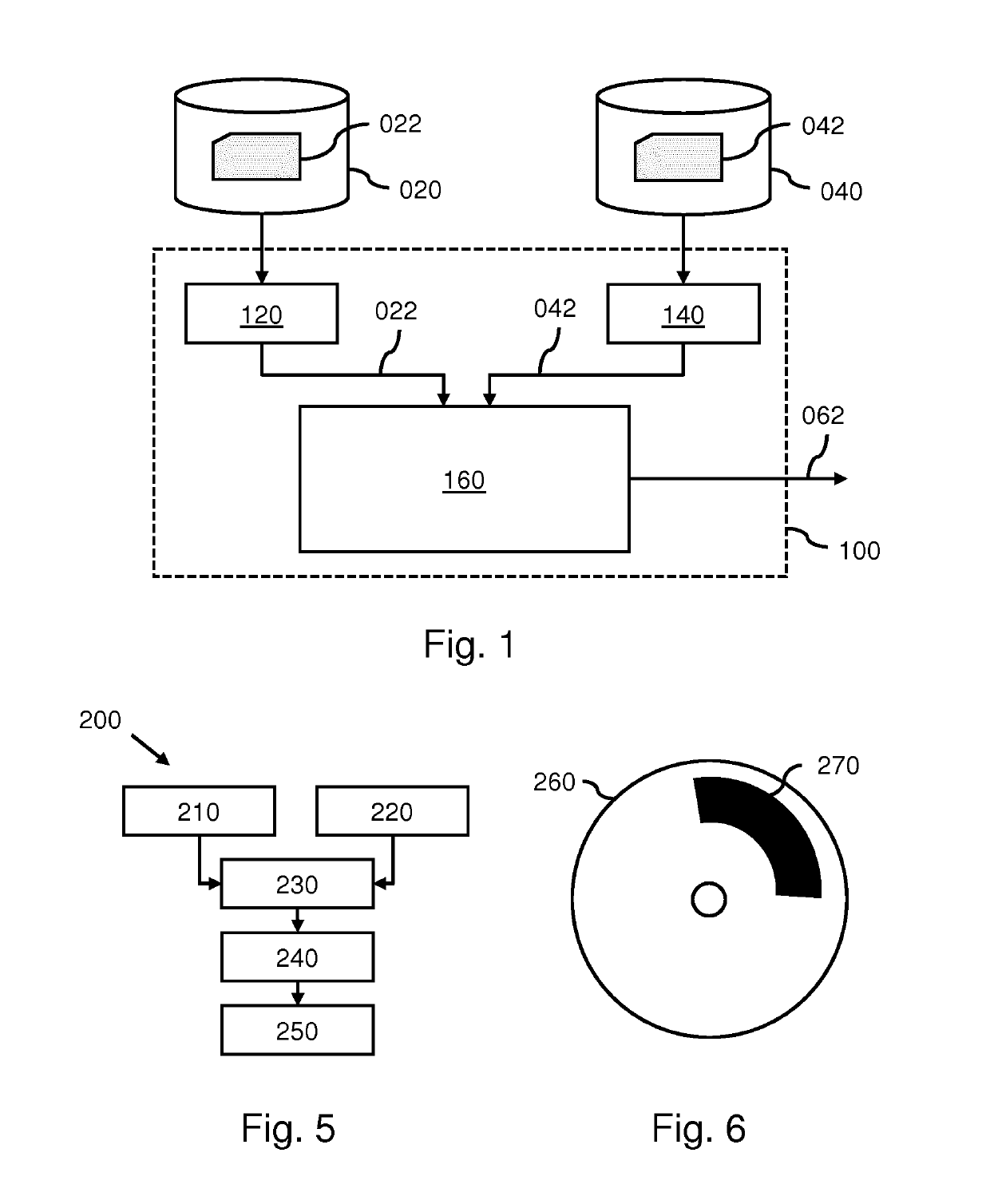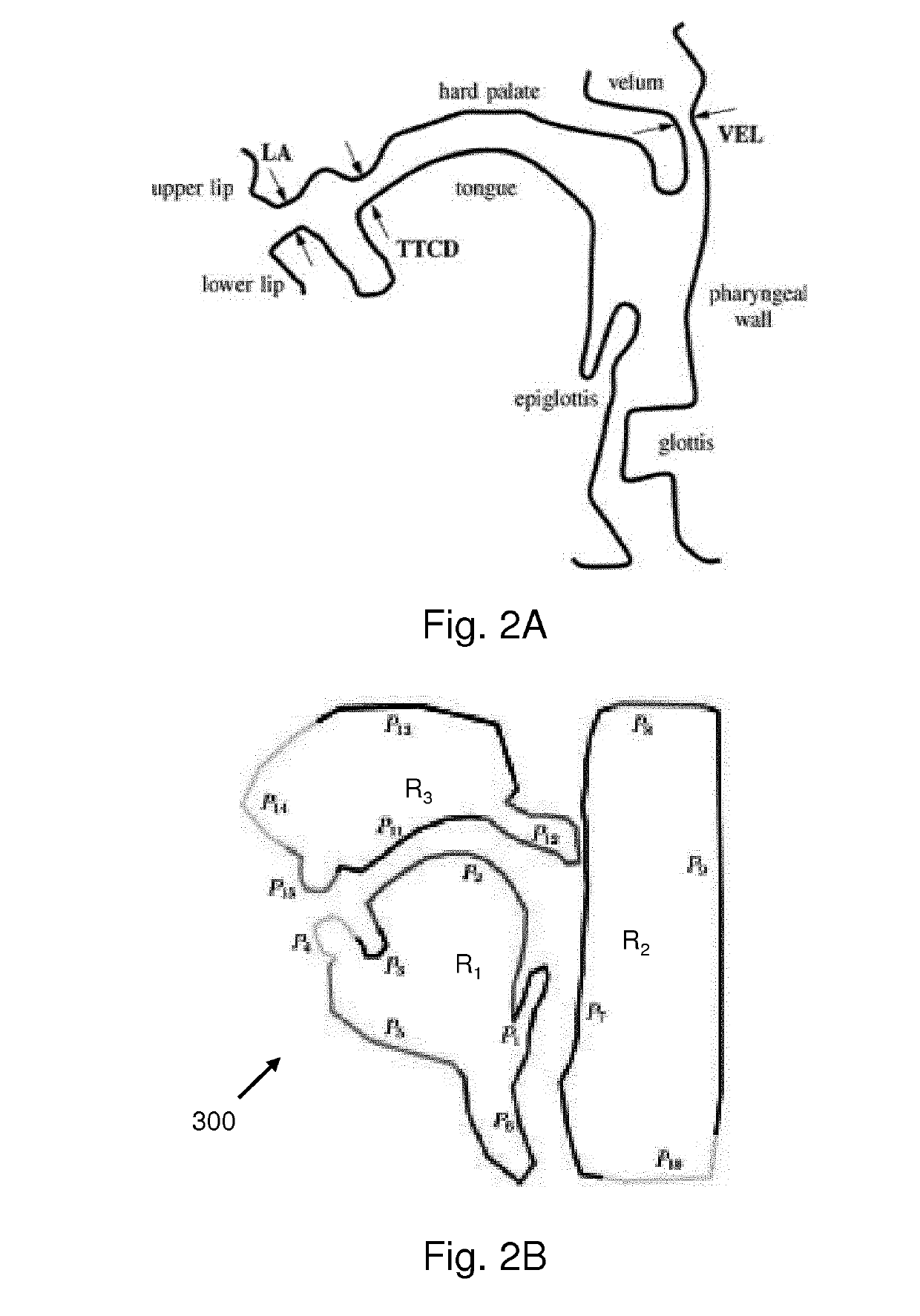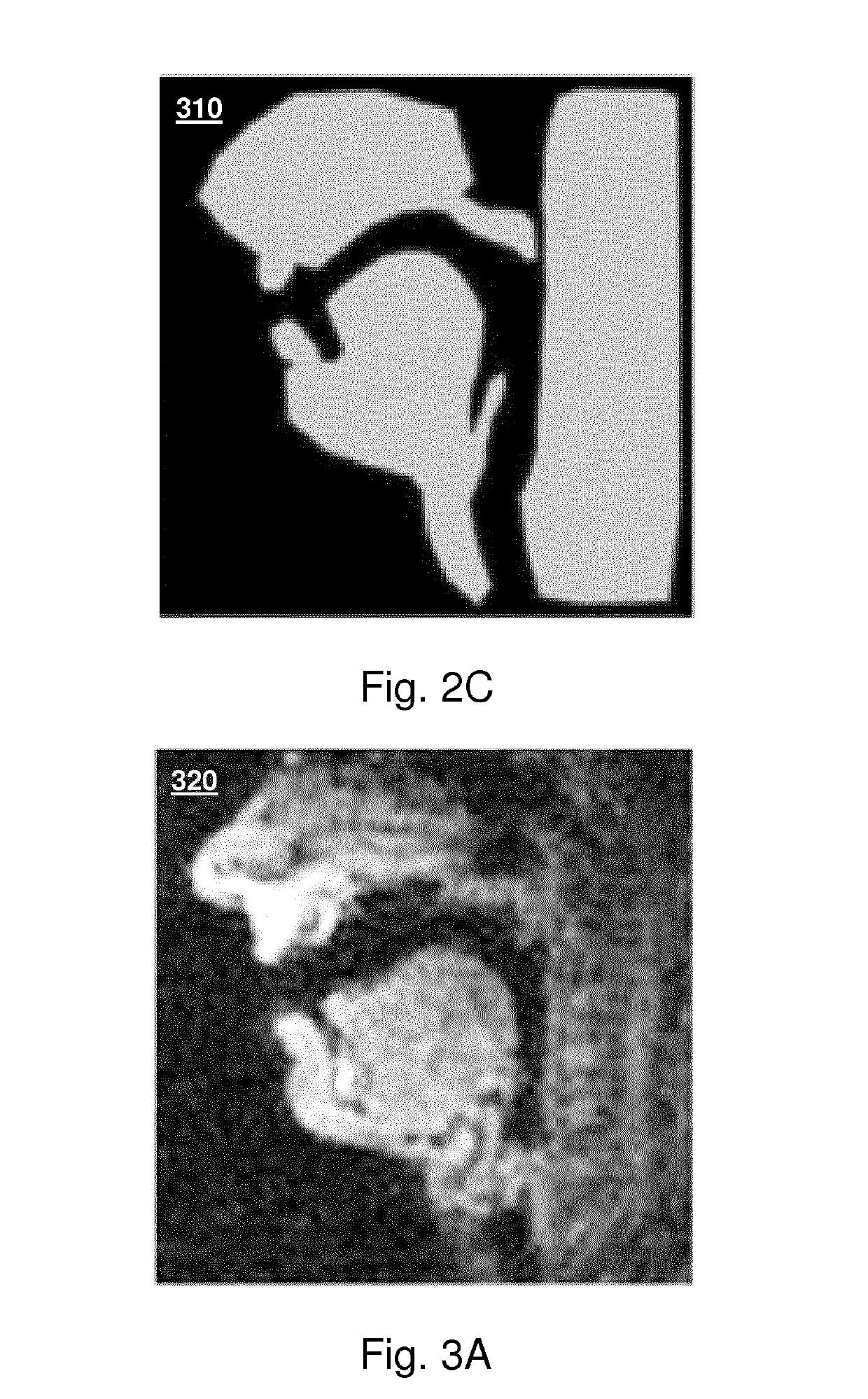Medical atlas registration
a technology of medical atlas and registration, applied in image analysis, healthcare informatics, image enhancement, etc., can solve the problems of inability to evaluate all possible (individual) transformations, increase the difficulty of improving the system, and the likelihood of optimizers getting “trapped”
- Summary
- Abstract
- Description
- Claims
- Application Information
AI Technical Summary
Benefits of technology
Problems solved by technology
Method used
Image
Examples
Embodiment Construction
[0070]FIG. 1 shows a system 100 for enabling atlas registration in medical imaging. The system 100 is shown to comprise a first input interface 120 for accessing atlas data 022 defining a medical atlas, and a second input interface 140 for accessing image data 042 of a medical image. In the example of FIG. 1, both types of data are shown to be accessed from separate repositories, namely an atlas data repository 020 and an image data repository 040. For example, the atlas data repository 020 and / or the image repository 040 may be constituted by, or be part of, a Picture Archiving and Communication System (PACS) of a Hospital Information System (HIS) to which the system 100 may be connected or comprised in. Accordingly, the system 100 may obtain access to the atlas data 020 and / or the image data 040 via the HIS. Alternatively, the atlas data 020 and / or the image data 040 may be accessed from an internal data storage of the system 100. In general, each or both types of input interfaces...
PUM
 Login to View More
Login to View More Abstract
Description
Claims
Application Information
 Login to View More
Login to View More - R&D
- Intellectual Property
- Life Sciences
- Materials
- Tech Scout
- Unparalleled Data Quality
- Higher Quality Content
- 60% Fewer Hallucinations
Browse by: Latest US Patents, China's latest patents, Technical Efficacy Thesaurus, Application Domain, Technology Topic, Popular Technical Reports.
© 2025 PatSnap. All rights reserved.Legal|Privacy policy|Modern Slavery Act Transparency Statement|Sitemap|About US| Contact US: help@patsnap.com



